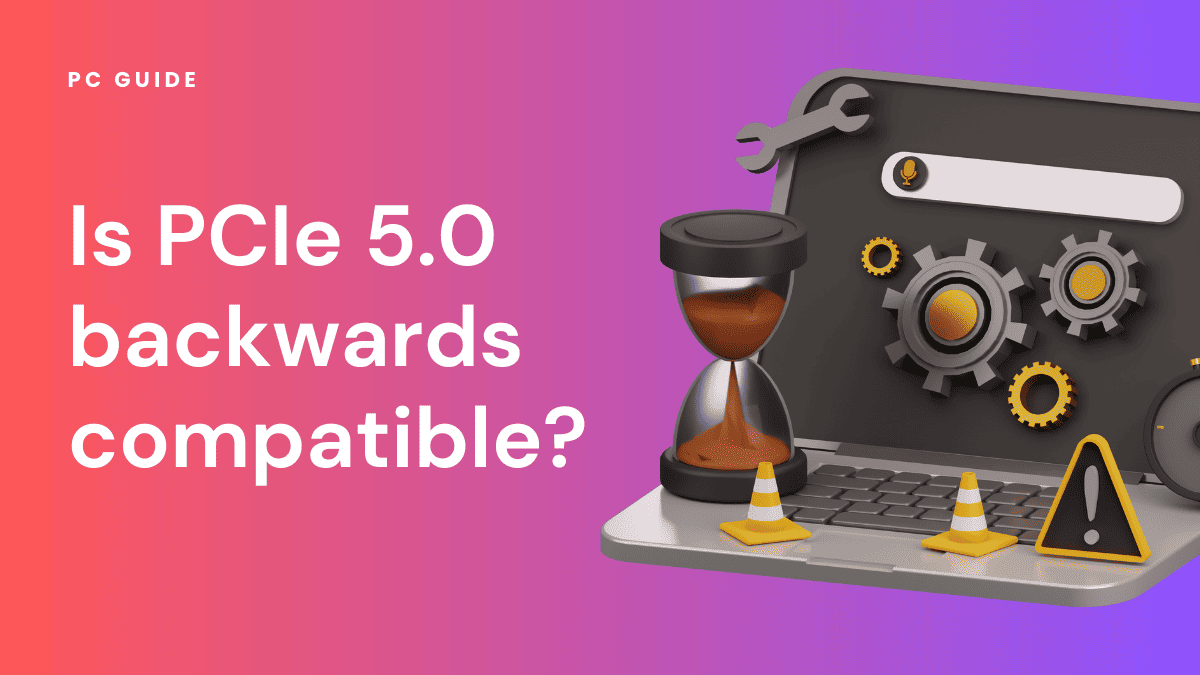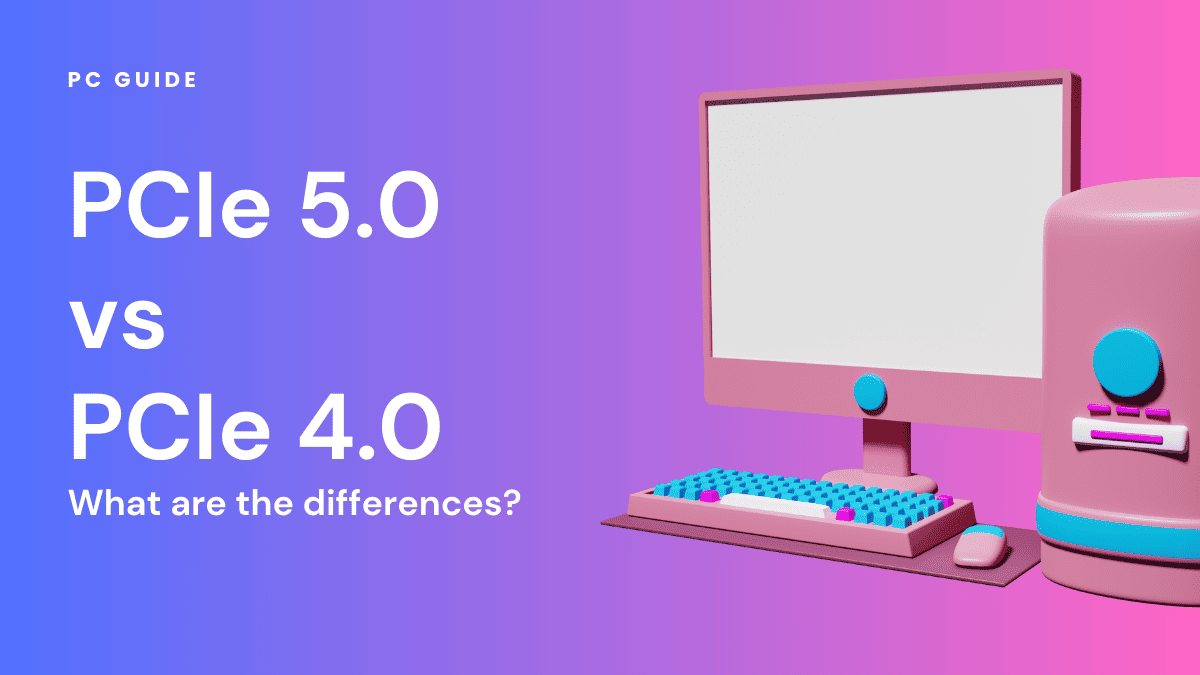Exploring the Backwards Compatibility of PCIe 5.0

Table of Contents
PCI Express, commonly known as PCIe, is the leading internal interface for connecting vital components such as graphics cards, SSDs, and Wi-Fi cards to a computer’s motherboard and CPU. “Is PCIe 5.0 Backwards Compatible?” is a question many tech enthusiasts are asking, especially with the introduction of the latest generation of this peripheral component interconnect express standard.
PCIe 5.0 boasts significant enhancements over its predecessor, PCIe 4.0. It promises faster data transfer rates, but does it maintain compatibility with older versions? Dive in as we explore this critical aspect of PCIe 5.0, along with insights into how major players like Intel and AMD are adapting to this change.
Prime Day is finally here! Find all the biggest tech and PC deals below.
- Sapphire 11348-03-20G Pulse AMD Radeon™ RX 9070 XT Was $779 Now $739
- AMD Ryzen 7 7800X3D 8-Core, 16-Thread Desktop Processor Was $449 Now $341
- ASUS RTX™ 5060 OC Edition Graphics Card Was $379 Now $339
- LG 77-Inch Class OLED evo AI 4K C5 Series Smart TV Was $3,696 Now $2,796
- Intel® Core™ i7-14700K New Gaming Desktop Was $320.99 Now $274
- Lexar 2TB NM1090 w/HeatSink SSD PCIe Gen5x4 NVMe M.2 Was $281.97 Now $214.98
- Apple Watch Series 10 GPS + Cellular 42mm case Smartwatch Was $499.99 Now $379.99
- ASUS ROG Strix G16 (2025) 16" FHD, RTX 5060 gaming laptop Was $1,499.99 Now $1,274.99
- Apple iPad mini (A17 Pro): Apple Intelligence Was $499.99 Now $379.99
*Prices and savings subject to change. Click through to get the current prices.
Unraveling the Truth About the Backwards Compatibility of PCIe 5.0
Understanding Backwards Compatibility
Before diving into the compatibility of PCIe 5.0, it’s essential to grasp what “backwards compatibility” truly means. In the realm of technology, being backwards compatible signifies that newer systems can support older versions of hardware or software. In the context of PCIe, it means that older-generation peripherals can be inserted into a newer generation's slot without any hitches.
The Verdict on PCIe 5.0’s Compatibility
PCIe 5.0 proudly continues the tradition of being fully backwards compatible with previous PCIe generations. This ensures that PCIe 5.0 hardware can seamlessly fit into older PCIe slots, albeit at reduced speeds due to the older slot’s bandwidth limitations. Interestingly, PCIe 5.0 also boasts forwards compatibility, allowing it to connect to even newer generation slots, a feature that future-proofs the technology.
For instance, if you have a high-speed PCIe 5.0 NVMe SSD or an RTX graphics card designed for PCIe 5.0, you can comfortably install it in a PCIe 4.0 or even a PCIe 3.0 slot on a motherboard. While the device will operate flawlessly, it will be constrained by the bandwidth of the older PCIe slot, preventing it from reaching its maximum potential.
Maximizing PCIe 5.0’s Potential
To truly harness the raw power and faster transfer rates of PCIe 5.0, both the device and the motherboard slot need to be PCIe 5.0-compliant. When these components are paired, users can experience the unparalleled speed enhancements that PCIe 5.0 offers, especially beneficial for data centers and machine learning applications.
The Legacy of PCIe’s Compatibility
Backwards and cross-generational compatibility has always been a cornerstone of the PCI Express specification. Modern motherboards, whether they support PCIe 4.0, 5.0, or even older generations, typically offer compatibility for several generations back. This design philosophy ensures that as PCIe continues to evolve, users can transition smoothly, adopting next-generation PCIe technology without the immediate need for a complete system overhaul.
Whether you’re looking at processors, chipsets, or storage devices, the PCIe standard has consistently prioritized compatibility. This commitment ensures that users can always stay ahead of the technology curve, benefiting from the latest advancements without sacrificing their existing investments.
Final thoughts
In conclusion, the question “Is PCIe 5.0 Backwards Compatible?” can be answered affirmatively. While PCIe 5.0 slots and devices are essential to harness those high-performance transfer speeds, the beauty of PCIe 5.0 lies in its ability to maintain backwards compatibility. This ensures that users with older PCIe versions can upgrade without facing a bottleneck in their system.
The Evolution of PCIe
With the introduction of 12th-gen processors like Alder Lake and high-throughput GPUs from NVIDIA, the demand for faster data acceleration has never been higher. PCIe 5.0, backed by PCI-SIG, addresses this by offering incredible speeds even with fewer lanes. This ensures better signal integrity and a smoother experience for users.
Overcoming Limitations
While SATA drives and older GPUs might not require the full speed of PCIe 5.0, the standard’s flexibility ensures that there’s no compromise on performance. Whether you’re a casual user or someone seeking the pinnacle of acceleration, PCIe 5.0 stands as a testament to forward-thinking and user-centric design.

